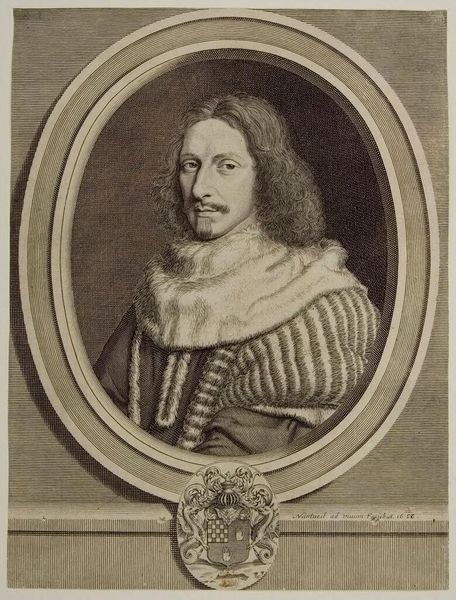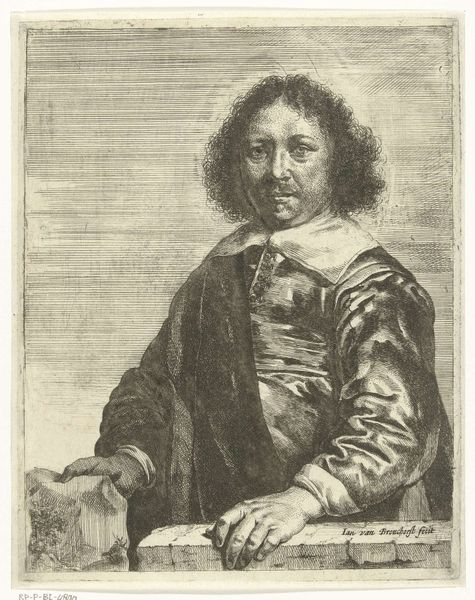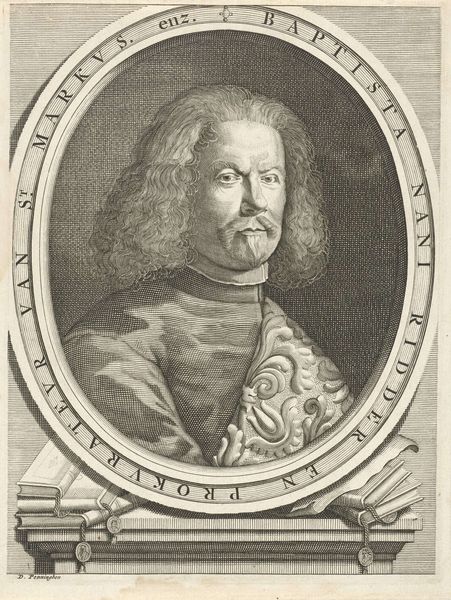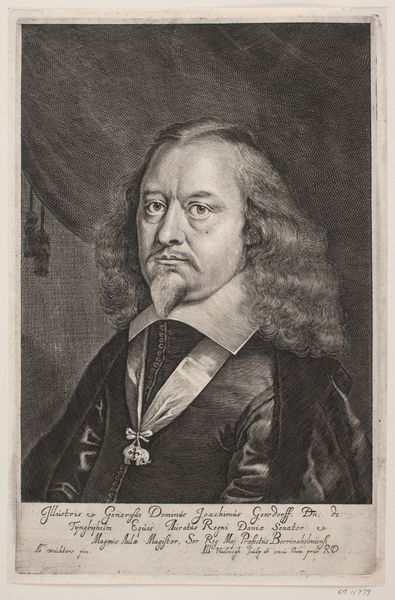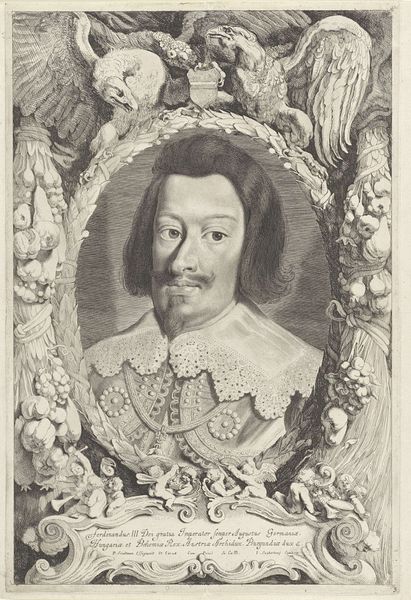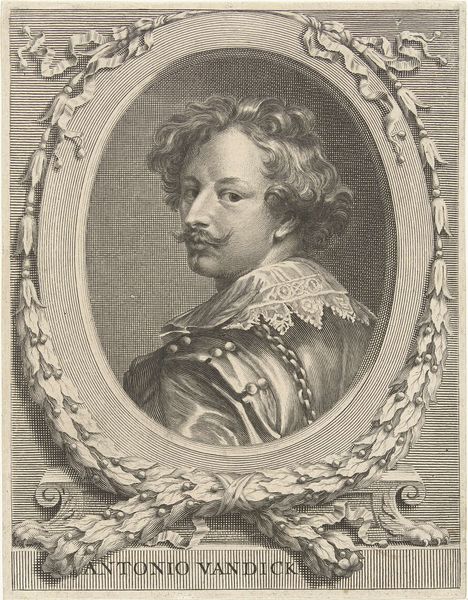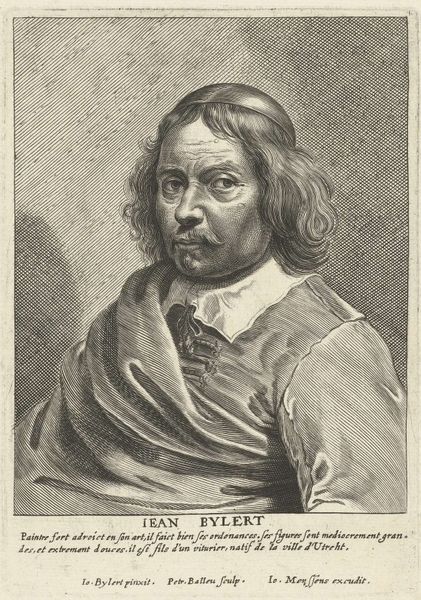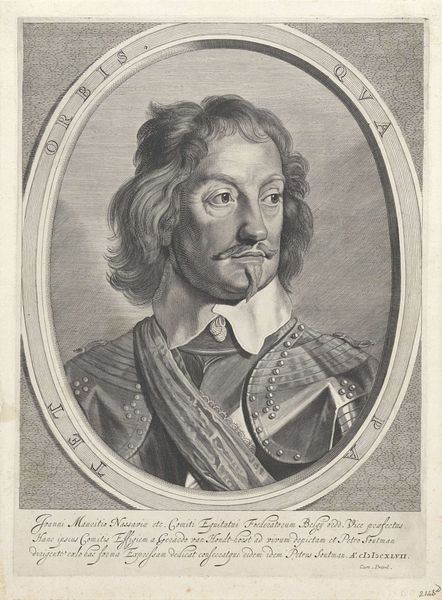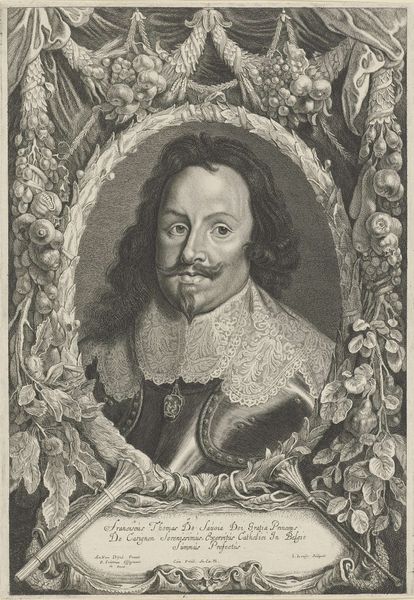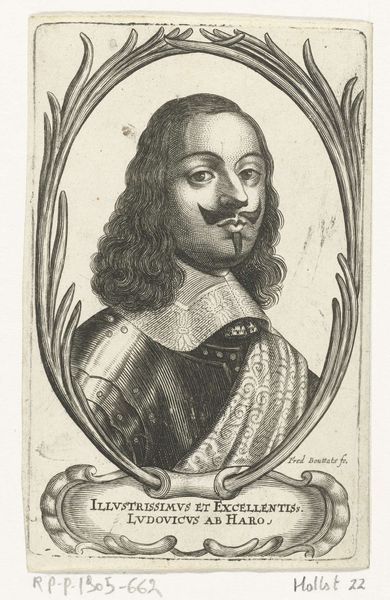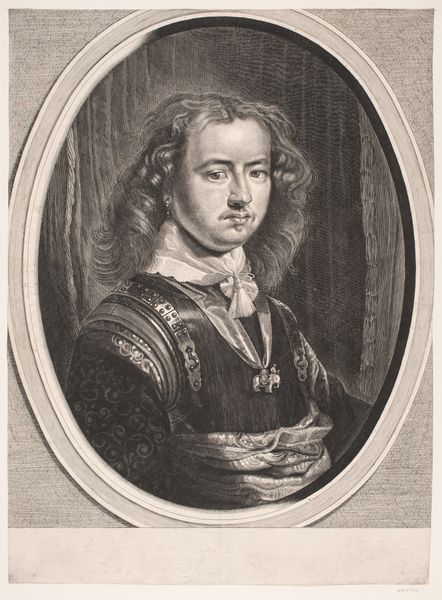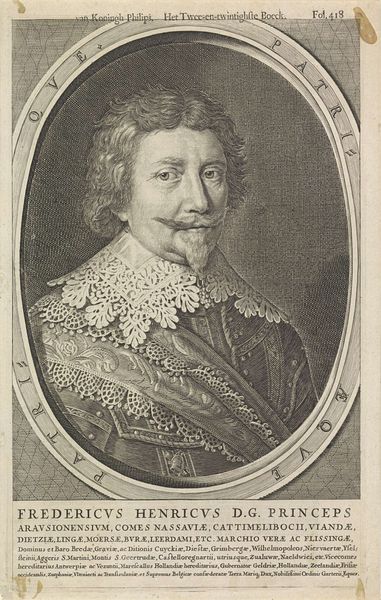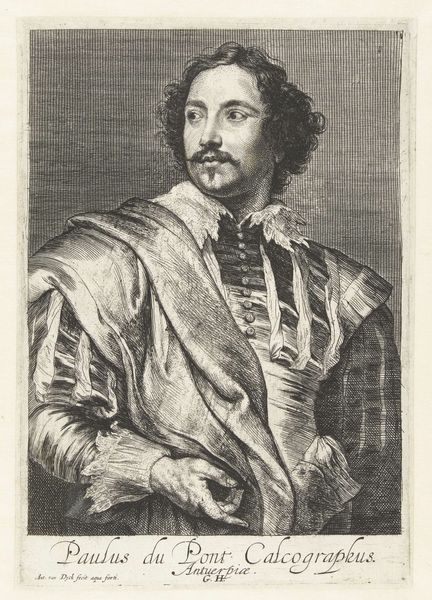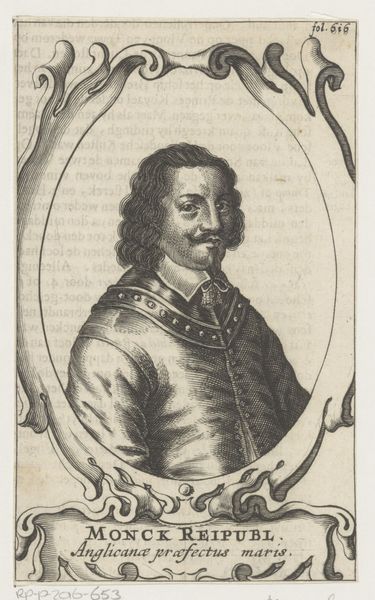
Copyright: CC0 1.0
Curator: This is "Rembrant (?)," a work by Thomas Worlidge. He was active in the 18th century, passing away in 1766. Editor: The most striking thing to me is the subject’s gaze. There’s a subtle challenge in his eyes, as if he's questioning the viewer's assumptions. Curator: The artist clearly intends to link this figure, whoever they might be, to Rembrandt, embedding the subject within a lineage of artistic and perhaps even intellectual greatness. Editor: Yes, and the Duke of Argyle connection is crucial. This piece becomes not just a portrait, but a statement about power, patronage, and the construction of identity in 18th-century England. Curator: It reflects how artists like Worlidge used established visual languages to elevate their subjects, associating them with historical and symbolic weight. Editor: Absolutely, and it reminds us how art functions within complex social networks, reflecting and reinforcing the ideologies of its time. Curator: Indeed, an image that prompts us to consider the layers of meaning embedded in a portrait. Editor: And how those layers are always intertwined with broader narratives of power and representation.
Comments
No comments
Be the first to comment and join the conversation on the ultimate creative platform.
